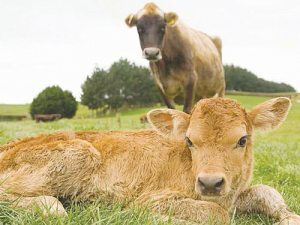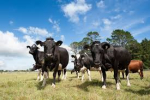Planning and preparation make for a good calving season, says DairyNZ.
Farmers can help their farm team set up early for smooth calving.
Supplies of metabolics, electrolytes and navel spray must be on hand or ordered; new team members have to be up to date on farm policies and what to expect during calving.
A calf trailer and feeding equipment, clean and disinfected, should be on standby; the calf shed must be clean and disinfected, repaired as needed and well maintained.
A designated sick calf area must be ready, fresh bedding laid in the calf shed and a calving kit prepared.
DairyNZ says a well-stocked calving kit will save trips between the paddock and the shed.
“Keep your calving kit at the gate of the springer paddock. Have a team member in charge of making sure it is restocked regularly.
“Planning and preparing for calving with your farm team will reduce stress when calving is in full swing and help it run smoothly.
“Hold a team meeting prior to calving and decide who will do what and when. Record the plan where everyone can see it. Introduce new staff to systems and processes so everyone is on the same page when calving starts. Set up a roster and make sure staff know how to fill out timesheets.”
Eating well is important; some owners provide staff with slow cookers; keep nutritious snacks at the shed or eat breakfast together after milking.
Watch for signs of stress, meet regularly and talk often.
Calving kit contents
- Bucket with a lid to contain kit (tape a checklist of contents inside the lid)
- Metabolics (clearly labelled milk fever treatments and starter drench)
- Three calving ropes or chains (strong, supple and cleaned after each use).
- 2L container of lube (a plunger pump is an easy way to dispense lube if hands are busy)
- Towel and soap for cleaning hands
- Notebook and pencil (a pencil will write in the wet, a pen will not)
- Ear tags or other calf identification system (pre-numbered tags with corresponding numbers on a record sheet will save time and cut the risk of recording mistakes)
- Spray paint -- red plus another colour (red can be used as a warning colour; e.g. withhold milk. Communicate this with staff)
- Gloves -- for rectal or other exam
- Head torch and spare batteries
- Iodine spray -- pre-mixed with water (do not use teat dip as an alternative)
- Key contact numbers (vet, manager) on laminated sheet. Save numbers in phone)
- Calving intervention guide
- Food/energy bars.











